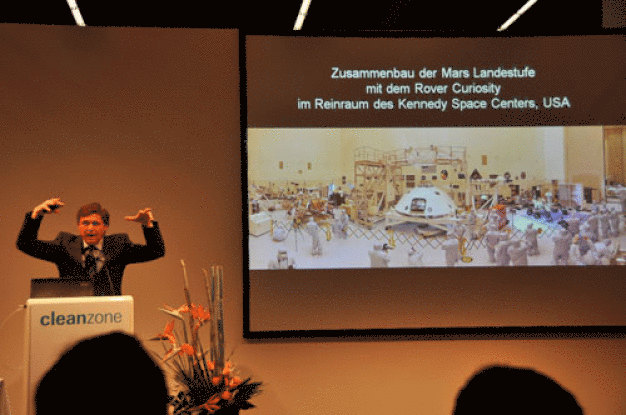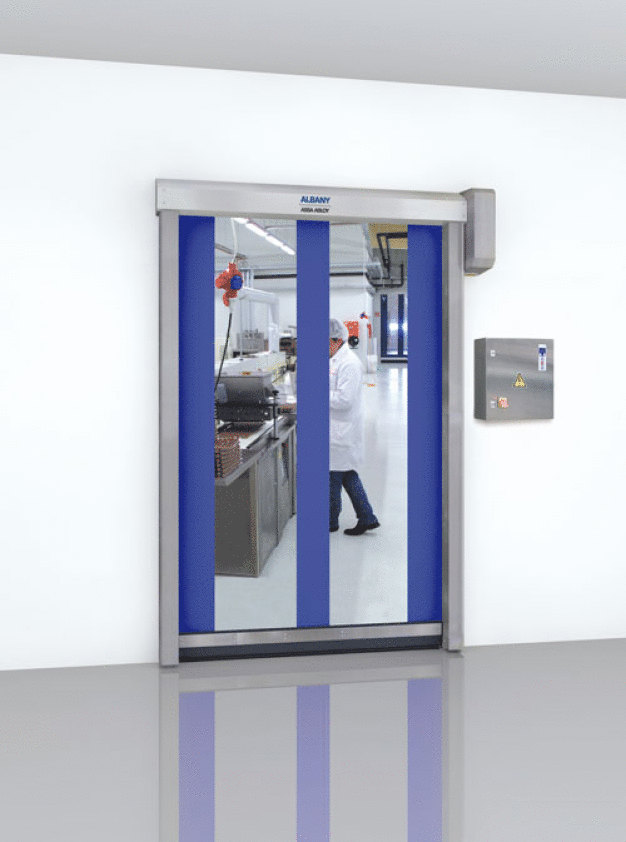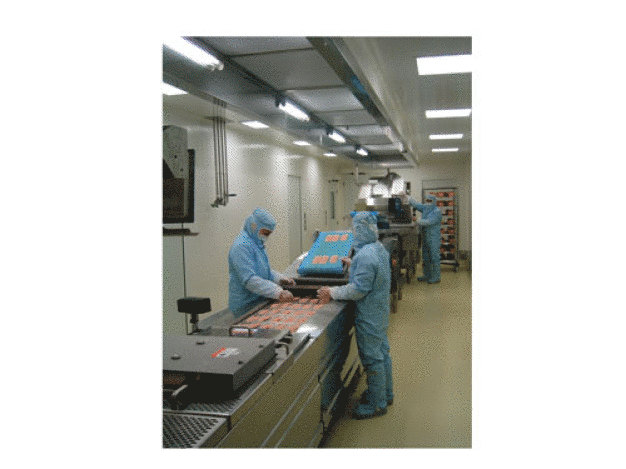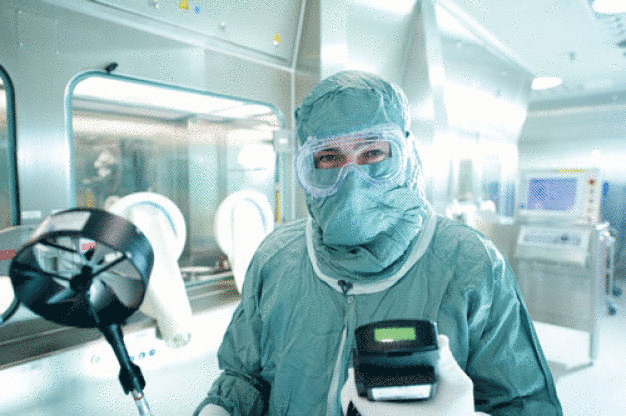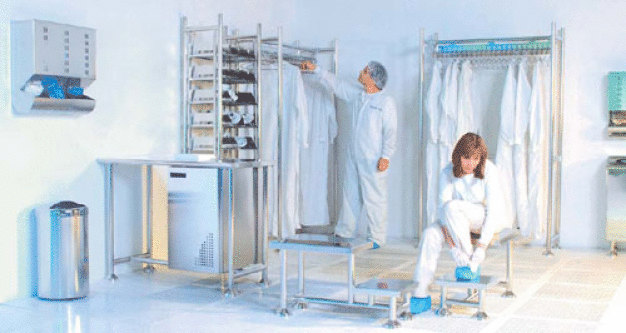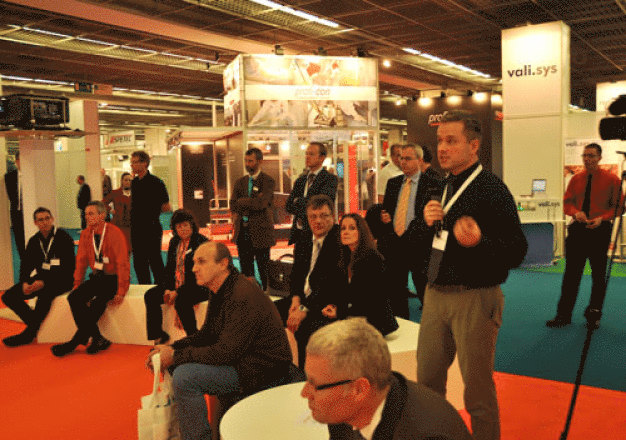- Trade fair
New standards for surface cleanliness, energy efficiency and nano-particles are under discussion
Cleanzone 2014 provides information on the latest cleanroom standards and their implementation
The word “clean” almost automatically brings to mind a universal ideal, yet cleanroom philosophies vary from continent to continent, as well as from region to region. Traditionally the USA is seen as being fond of regulations, Japan as focused on technology and Europe as leaders in the field of applied engineering. This gives rise to all manner of ideas which are currently leading to the continued development of recognised standards.
Koos Agricola, General Secretary of the ICCCS (International Confederation of Contamination Control Societies) and the ICEB (International Cleanroom Education Board), sums up the situation: “Whereas the US is known for sticking with familiar processes for a long time, US researchers are responsible for introducing numerous new technical solutions for cleanrooms. Japan is currently producing fewer outstanding innovations than it did in the past, yet it has perfected an extremely scrupulous system of quality control.”
Most of the ideas for optimising existing standards and guidelines originate in Europe. Emerging markets in Asia and South America, home to an increasing number of new cleanrooms, are fond of adopting these advances. Koos Agricola: “They often use European products, but increasingly there are also alternatives available from China. Staff training is a significant factor, and Europe could play a much bigger role here than is currently the case.”
In spite of different national regulations, VDI Guideline 2083 (VDI – Association of German Engineers) and ISO EN DIN 14644 have established themselves as the basis for cleanroom operation and have become widely accepted internationally. According to Thomas Wollstein, who has overall responsibility for the field of cleanrooms at VDI: “The chaos that prevailed 50 years ago when there were countless national cleanroom standards has now been eliminated with ISO 14644. Many useful standards have been implemented using this as a model. Now there are a number of pressing new issues on the agenda.” The solutions to these issues will change cleanroom operation in important ways.
Taking smaller particles and viable organisms into account
For the definition of air purity classes, particle size distributions based on the distribution of “natural aerosols” in ambient air have been defined down to the micron and sub-micron range. Following the expansion of the air purity classes to cover nano-particles (scale: 10 angstroms), which have their very own agglomeration behaviour, these must now be accounted for with new particle size distributions and new measurement methods. The development of the corresponding standards is only just beginning.
It is not only extremely small particles that pose problems, but also those which can reproduce, such as bacteria. Unlike aerosol particles, however, these cannot be measured immediately. Instead, they must first be allowed to reproduce in a culture for a number of days in order to demonstrate sterility, so that the product can be approved. There is already a VDI guideline governing bio-contamination, which helps meet the need for rules governing the hygienic design of cleanrooms.
This guideline is completed by a brief introduction to the GMP cleanroom classes, their areas of application and the threshold values on which they are based. This poses the question: just how important is GMP cleanroom classification in comparison to ISO classification? This is to some degree a question of philosophy, but in practice it means that anyone who manufactures pharmaceuticals has to work in accordance with GMP, as otherwise they will be unable to satisfy the conditions of audits performed by regulatory bodies. Certification in accordance with ISO standards can also offer additional advantages, such as the optimisation of workflows, the utilisation of all potential cost reductions and the ability to satisfy specific customer requirements. Companies who wish to enjoy these benefits do not have to start from scratch, however, as GMP compliance generally equates to compliance with 70 to 80 percent of the requirements for ISO certification. One thing both classification systems have in common is the fact that they are based on air cleanliness, and they always specify upper limits on the numbers of particles of particular sizes that are permissible per cubic metre.
Cleanable, cleanroom-compatible: surfaces and materials
Koos Agricola: “More and more people in the sector are also coming to realise that clean air is far from the only thing that matters in a cleanroom. It is also necessary that all surfaces be cleaned in accordance with the specifications of ISO 14644-9, yet there is still no standard governing the particulate deposits on the fixtures, furnishings and walls, among other things.”
Materials – and combinations of materials – are an important part of this equation, as it is sometimes necessary to deal with material pairs, such as a roller moving across a surface. Thomas Wollstein: “In Part 17 we recently described a process that reproduces actual usage conditions. This involves allowing a ball to roll across a surface in order to define the standard contact load. The model is based on relevant research conducted by the Fraunhofer-Gesellschaft.”
Potentially much more energy efficient
Tremendous progress has been made with regard to energy efficiency in the cleanroom in German-speaking countries in particular. Michael Kuhn of STZ EURO (Steinbeis Transfer Centre for Energy, Environmental and Cleanroom Technology, Offenburg) provided numerous examples to demonstrate just how large the potential savings can be – almost always 10 to 20 percent, and as much as 50 percent when all of the potential sources of savings are utilised. Standardisation in the form of standards is currently under way at the VDI, and the British Standards Institution – the UK's counterpart to Germany's DIN – has already proposed that this issue be tackled within an international framework.
Pole position for Europe – update for everyone at Cleanzone
To sum up, although the term “standard” brings to mind something that has been set in stone, there is currently a great deal happening in the field of cleanroom standards. An entire series of questions having to do with standardisation problems is now being addressed in Germany, Austria, Switzerland, and the Netherlands. These currently include surface cleanliness, bio-contamination with viable organisms and the expansion of particles covered to include nano-particles.
Visitors will be able to find associated ideas, a wealth of tips for implementation in actual practice and innovative technical solutions at Cleanzone, the international trade fair and congress for cleanroom technology, on 21 and 22 October 2014 in Frankfurt am Main. It represents one of the best opportunities for obtaining comprehensive information and for establishing important personal contacts.
![]()
Cleanzone
Messe Frankfurt Exhibition GmbH
Ludwig-Erhard-Anlage 1
60327 Frankfurt am Main
Germany
Phone: +49 69 75756290
Fax: +49 69 757596290
email: anja.diete@messefrankfurt.com
Internet: https://cleanzone.messefrankfurt.com





